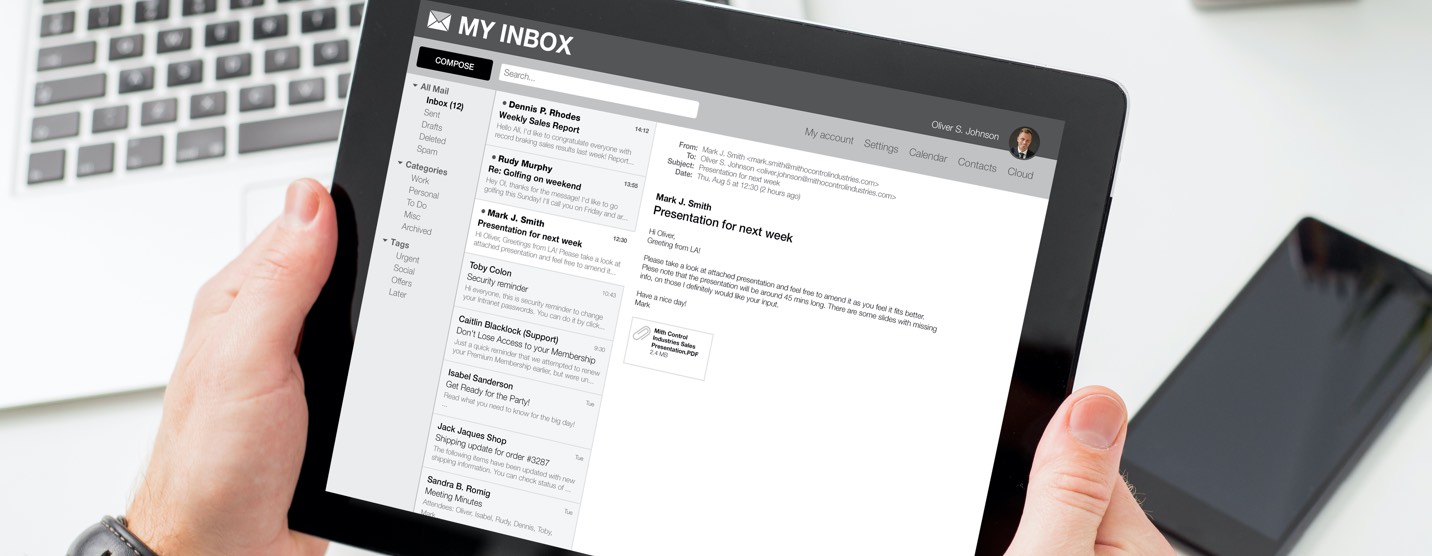OPTIMIZATION
7 A/B Tests to Consider to Improve Your Email Marketing Program
OPTIMIZATION
7 A/B Tests to Consider to Improve Your Email Marketing Program


Email continues to be one of the most reliable and effective tools for any acquisition and retention strategy. However, as consumers’ shopping habits evolve over time, and they become accustomed to receiving different kinds of emails, it’s important to constantly test what works best for your audience, industry, and brand..
A/B Testing in a Nutshell
Alternatively known as split testing, A/B testing compares two versions of a web page, email, or other marketing asset and measures the differences between them. This is done by giving one version to one group and the other version to another group. Regardless of what you’re testing for, there are some general rules that apply to every A/B test:
You always need a clear hypothesis prior to the test
Identifying “what works best” should be defined differently based on your business goals i.e. website visits, appointments made, eBook downloaded, etc.
Tests should be run long enough and to a large enough percentage of your audience to give you statistically meaningful results. Typically, 50/50 if your email list is small; If bigger, can test 20-50% of audiences and then send the winning test to the remaining half.

7 A/B Tests That Can Improve Your Email Marketing Program
With this in mind, here are 7 A/B tests you should consider to help improve your email marketing program.
1. Test Your Incentives
One of the most popular tools in a marketer’s arsenal is offering customer incentives, and there are many different aspects of incentives that you can and should test for, such as:
Type of Incentive – Percentage discount on purchase price vs. fixed dollar amount
Time Constraint – Purchase by this date and you get this much off the price
Discount vs. Gift With Purchase – Percentage off purchase amount vs. a gift
Discount Based on Cart Value – Spend X amount and receive a discount on total
Incentive for Specific Actions – Sign up for emails, complete customer review, etc
Helpful Hint – Every company has different margins associated with each incentive, which you’ll need to factor into your testing.
2. Testing Send Times & Cadence
These just might be the most asked questions regarding email marketing: What days should I send my emails, what times, and how often? Not surprisingly, these are also some of the most popular A/B tests:
When to Send – While most email service providers (ESP) suggest the best time for sending emails based on previous data and industry benchmarks, it’s still a good idea to run your own test.
Time of Day – Is it best to send emails during the business day when people are sure to be on a computer? Maybe after work when they’re relaxing at home? Perhaps the quiet of the early morning? Let your tests provide the answers.
Days of the Week – Again, ESPs will offer their own suggestions as to what days you should send your emails, but running your own test will give you invaluable “real world” insights from your actual customers.
Frequency – This depends largely on what it is you’re selling. You may be selling a large ticket item which is generally a one-time purchase. Maybe you’re selling a B2B service that requires a longer sales cycle. If you happen to be selling an inexpensive consumer product that’s bought more frequently, like dish soap or laundry detergent, then you may want to send more frequent emails.
Helpful Hint – Test the same time in each time zone so you have an accurate picture across the country or globe.

3. Test Your CTAs
Your call-to-action is one of the most important aspects of email marketing, as they increase your email’s click-through rate by making it perfectly clear to readers what the next step is. Generally speaking, there are three factors that go into identifying a winning call-to-action:
Copy – In addition to finding out if general copy outperforms more specific copy, you can also test to discover the optimal length of copy, as well as whether a more urgent tone of copy is more effective i.e. “Download this ebook” vs. “Download ebook now.”
Tone – The tone you use will depend a lot on your brand. Some brands can get away with taking a more lighthearted approach, while others have to keep things fairly serious. Either way, test to be sure.
Button Design – Some brands find that big, visually disruptive buttons work best, while others feel less is more. In some cases, text links might outperform buttons entirely.
Helpful Hint – It’s been proven in studies that positive copy engages a reader’s brain in a more powerful way, allowing them to easily understand your key messages and increasing their motivation to click-through and buy your product.

4. On the Subject of Subject Lines
The subject line is not just the first element of your email, it’s also one of the most important. After all, it’s the first thing people see that prompts them to open the email, and if no one opens it, that email becomes nothing more than a waste of time and effort:
Copy – Test to see if your audience responds better to an incentive in the subject line, or a simple teaser of what’s inside the email.
Word Order – The sequence of words in your subject line can make a difference in how people read and interpret them, and can potentially impact your email open rate. For example, placing a discount offer towards the front of the sentence versus the back might help to increase open rates.
Tone – Sometimes, a bit of humor in your subject line can help entice readers to open your email. Try pitting a more playful subject line against one that’s more general in tone to see which comes out on top.
Helpful Hint – iOS privacy changes have made it harder to gather analytics on all platforms, including email. Be aware that email open rates have also been affected by the latest Apple change.
5. Show and Tell
If a picture is worth a thousand words, then using images in your email campaigns can say a lot, offering a powerful tool to help get your message across:
Header Banners – Since the header banner is the most prominent element on the page, you want to test to not just find the optimal size but also position. Does the offer banner always need to live at the top of the page, or, can it be just as effective in another position? Testing will help you make that determination.
Amount of Images – How many images throughout the body of the email is the right amount? Images should help sell the product, not distract from them. What kinds of images do they prefer? Should you use imagery that includes people and the product? Maybe you should put all of the focus on the product?
Pricing and Offers – Is a big, splashy hero banner with an oversized offer more effective than an email with a tastefully-sized sunburst? Or, is a simple text link promoting an offer the way to go? Testing will uncover the answer.
Helpful Hint – As more consumers are purchasing via their mobile phones, pay particular attention to the imagery you choose for your mobile app.

6. The Long and the Short of It
As attention spans decrease due to the growing popularity of mobile, there’s a tendency in emails to use shorter copy. However, if your email is too short you may not fully get your message across. Too long, and it may overwhelm subscribers causing them to abandon your email:
Long vs. Short – Test short, to-the-point copy against longer copy that provides additional details about your product or service.
Length By Message – Should an email that’s more promotional in nature be shorter and punchier than, say, an email that’s more general in nature?
Helpful Hint – In a recent study involving over 40 million emails to determine which factors led to getting responses, short emails received the highest response rate on average. In fact, emails with 75–100 words had the highest response rate at 51 percent.

7. Test Your Email Navigation
Despite its lowly position on the page, your footer navigation just might be the most clicked content you send out, particularly in a retail email. In fact, your footer content is what will drive many of your subscribers back to your site.
Make No Assumptions – Don’t make the mistake of thinking that you can just use the footer from your website in an email – you might not be able to. Different channels often require different designs and information.
Buttons – Don’t overlook the design and content of those CTAS. Test how many to include (remember the paradox of choice), and the design. Should it be a button (solid or ghosted) or a text link? Which landing pages need to have a presence in the footer? Company info and careers are commonly featured in footers but, through testing, you might find that other landing pages need to be there, as well.
Helpful Hint – You can also test for sidebars. Your audience will respond differently to two sidebars compared to one or two different single-sidebar layouts.
“Testing leads to failure, and failure leads to understanding.”
Burt Rutan
AEROSPACE ENGINEER & ENTREPRENEUR
Don’t Guess. Test.
When you consider how efficient email marketing can be, it’s hard to understand why every company doesn’t use A/B testing to make their email program even more effective. After all, if you had to choose between guessing if your hypothesis is right, and knowing it’s right, why in the world would you leave it up to chance? You wouldn’t, and, with A/B testing, you don’t have to.
Want even more educational content?
Subscribe below to get timely content delivered to your inbox,
or fill out the form below to speak to a Peakster about your next project.

DIGITAL MARKETING
Top 10 Photos of Developers Staring At Screens

DIGITAL STRATEGY
5 Ways Retailers Can Make Influencer Marketing More Influential

ECOMMERCE